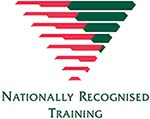


Certificate III In Bricklaying / Blocklaying
CPC33020 Apprenticeship - ApprenticeshipDevelop high quality bricklaying and blocklaying skills in this practical apprenticeship course
This apprenticeship training provides employers and their apprentices with the flexibility of workplace assessment combined with on-campus training.
Once you’ve successfully completed the Certificate III in Bricklaying and Blocklaying, you’ll be fully qualified to work, or start your own business, in this high-demand industry.
-
Read more about this course
INHERENT REQUIREMENTS
Entry requirements for this course: literacy and numeracy range from levels one to two.
Experienced teachers, who are experts in the field, will guide you through the program, which includes a combination of workplace assessment and off-site training. Once complete, you can develop your skills further with Chisholm’s Certificate IV in Building and Construction (Building).
Chisholm TAFE is the one of the largest provider of tertiary and vocational education in Melbourne's south east. With state-of-the-art facilities, professional training and support, you'll enjoy studying at Chisholm. So why wait? Enquire now. -
Study units
Unit code Unit Description CPCCWHS2001 Apply WHS requirements, policies and procedures in the construction industry CPCCCM2012 Work safely at heights CPCCOM1012 Work effectively and sustainably in the construction industry CPCCBL3002 Carry out masonry veneer construction CPCCOM1013 Plan and organise work CPCCOM1014 Conduct workplace communication CPCCOM2001 Read and interpret plans and specifications CPCCBL3001 Lay paving CPCCBL2001 Handle and prepare bricklaying and blocklaying materials CPCCBL2002 Use bricklaying and blocklaying tools and equipment CPCCBL3003 Carry out cavity brick construction CPCCBL3005 Lay masonry walls and corners CPCCBL3004 Construct masonry steps and stairs CPCCCA3002 Carry out setting out CPCCBL3006 Lay multi-thickness walls and piers CPCCCM2008 Erect and dismantle restricted height scaffolding CPCCBL3007 Install glass blockwork CPCCBL3016 Construct battered masonry walls and piers CPCCBL3009 Install flashings and damp proof course CPCCCM2009 Carry out basic demolition CPCCWHS1001 Prepare to work safely in the construction industry CPCCBL3013 Construct masonry structural systems CPCCBL3015 Construct decorative brickwork CPCCBL3011 Construct curved walls CPCCOM1015 Carry out measurements and calculations CPCCBL3012 Construct fireplaces and chimneys CPCCSF2004 Place and fix reinforcement materials CPCCBL3010 Construct masonry arches CPCCBL3014 Install fire-rated masonry construction CPCCCM2006 Apply basic levelling procedures CPCCCO2013 Carry out concreting to simple forms -
Course and career pathways
Nationally recognised training Certificate III In Bricklaying / Blocklaying Certificate IV In Building And Construction (Building) Possible job outcome - bricklayer
- Leading Hand
- building site manager
- construction manager
-
Skills recognition
Your current skills, knowledge and experience can help you get a qualification.
Find out about skills recognition and RPL for certificate to advanced diploma courses.
-
Admission requirements
Apprentices must have a Registered Training Agreement with their employer, It is recommended school leaver students complete the pre-apprenticeship pathway (Certificate II) prior to enrolling, or complete a pre-training assessment for literacy and numeracy of BKSB assessment with an outcome of ACSF exit level 2, working level 3
-
Fees
Fees Tuition fees* (GST exempt)
Fee Type Fee Amount Select Concession $615 Government subsidised $3,074 Full fee paying $18,444 Mandatory other fees** (GST inclusive)
Materials $135 And one of:
Student services – concession (annual) OR$135 Student services - no concession (annual) $270 *Student tuition fees are correct at time of publishing and are subject to change given individual circumstances at enrolment. Please note: Fees will be subject to change if the course runs over two or more calendar years. Check to see if you are eligible for government-subsidised training. Training to eligible students is delivered with Victorian and Commonwealth funding. Students with a disability are encouraged to apply for this course using Skills First funding.
**You are required to pay additional fees for materials and support services, not covered by your tuition fees. This may include things like learning resources, personal protective equipment/clothing, and vary depending on the course you study. Material fees are also subject to change given individual circumstances. Please note: You will also be required to pay the Student Services fee for each year of enrolment. -
Help with fees
Apprentices
Payment plans
At Chisholm, you can spread your course costs over the year by making part payments via direct debit on a weekly, fortnightly or monthly basis. Payment plans are available for local students enrolling in certificate level courses only. Read more about payment plans.
Scholarships
Annual scholarships may be available to eligible students suffering financial hardship through the Caroline Chisholm Education Foundation. Find out more about the scholarships.
Government-subsidised training
Training to eligible students is delivered with Victorian and Commonwealth funding. Students with a disability are encouraged to apply for this course using Skills First funding. See eligiblity requirements for government-subsidised training.
Other financial assistance available for apprentices
As an apprentice you may be eligible for financial assistance from the Australian Government to help with the costs of undertaking an apprenticeship. Read more about financial assistance for apprentices.
Employers
As an employer of an Australian Apprentice, you may be eligible for financial assistance from the Australian Government to help with hiring, training and retaining an apprentice. Find out more about your eligibility for financial assistance
Please note: Students may be required to undertake an assessment of their literacy and numeracy as part of their application process.
 Chisholm is a Registered Training Organisation (RTO) and provides Nationally Recognised Training (NRT). This means you can be assured that our training will provide you with a qualification that is recognised and respected across Australia.
Chisholm is a Registered Training Organisation (RTO) and provides Nationally Recognised Training (NRT). This means you can be assured that our training will provide you with a qualification that is recognised and respected across Australia.
Chisholm courses are subject to minimum and maximum group numbers. Courses may be cancelled or postponed if minimum numbers are not achieved by the start date of the course. Courses may close prior to the start date if the maximum numbers are reached. In that situation, eligible applicants will be offered a place in the next available intake.